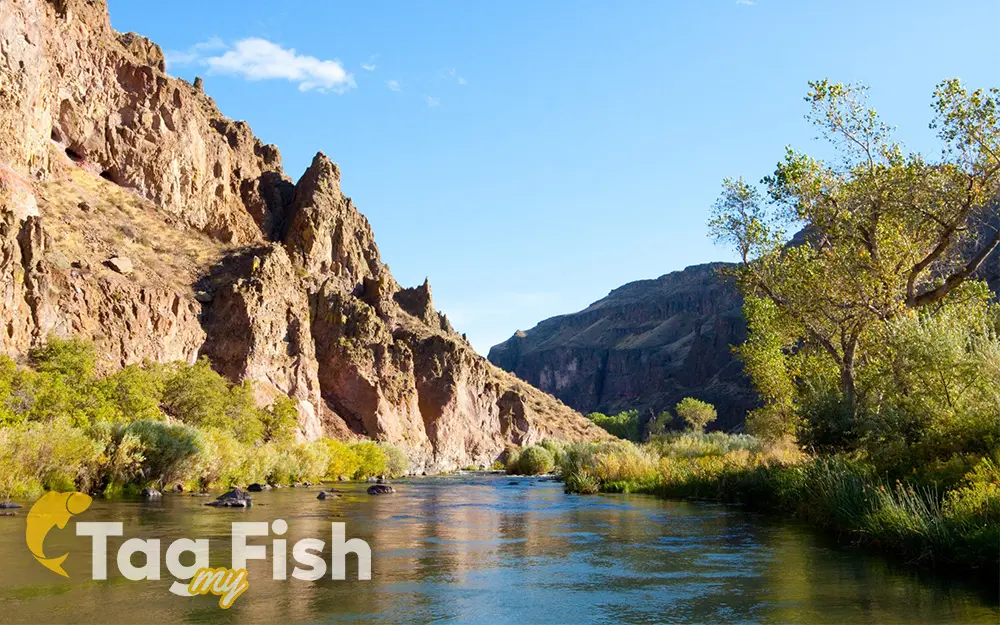Owyhee River

General data
- Name: Owyhee River
- Water system: Columbia River
- Water type: River
- Progression: Snake River -> Lake Wallula -> Columbia River -> Columbia River Estuary -> Pacific Ocean -> Planet Earth
- Climates: Temperate, Mountain
- Continents: North America
- Countries: United States of America
The Owyhee River is a tributary of the Snake River located in northern Nevada, southwestern Idaho and southeastern Oregon in the United States. It is 280 miles (450 km) long. The river’s drainage basin is 11,049 square miles (28,620 km2) in area, one of the largest subbasins of the Columbia Basin. The mean annual discharge is 995 cubic feet per second (28.2 m3/s), with a maximum of 50,000 cu ft/s (1,400 m3/s) recorded in 1993 and a minimum of 42 cu ft/s (1.2 m3/s) in 1954. The Owyhee drains a remote area of the arid plateau region immediately north of the Great Basin, rising in northeastern Nevada and flowing generally northward near the Oregon-Idaho border to the Snake River. Its watershed is very sparsely populated. The Owyhee River and its tributaries flow through the Owyhee Plateau, cutting deep canyons, often with vertical walls and in some places over 1,000 feet (300 m) deep. The Owyhee River is known for its rugged beauty and excellent fishing, especially for trout. The river flows through a remote and scenic canyon, offering anglers the chance to catch a variety of fish species.


